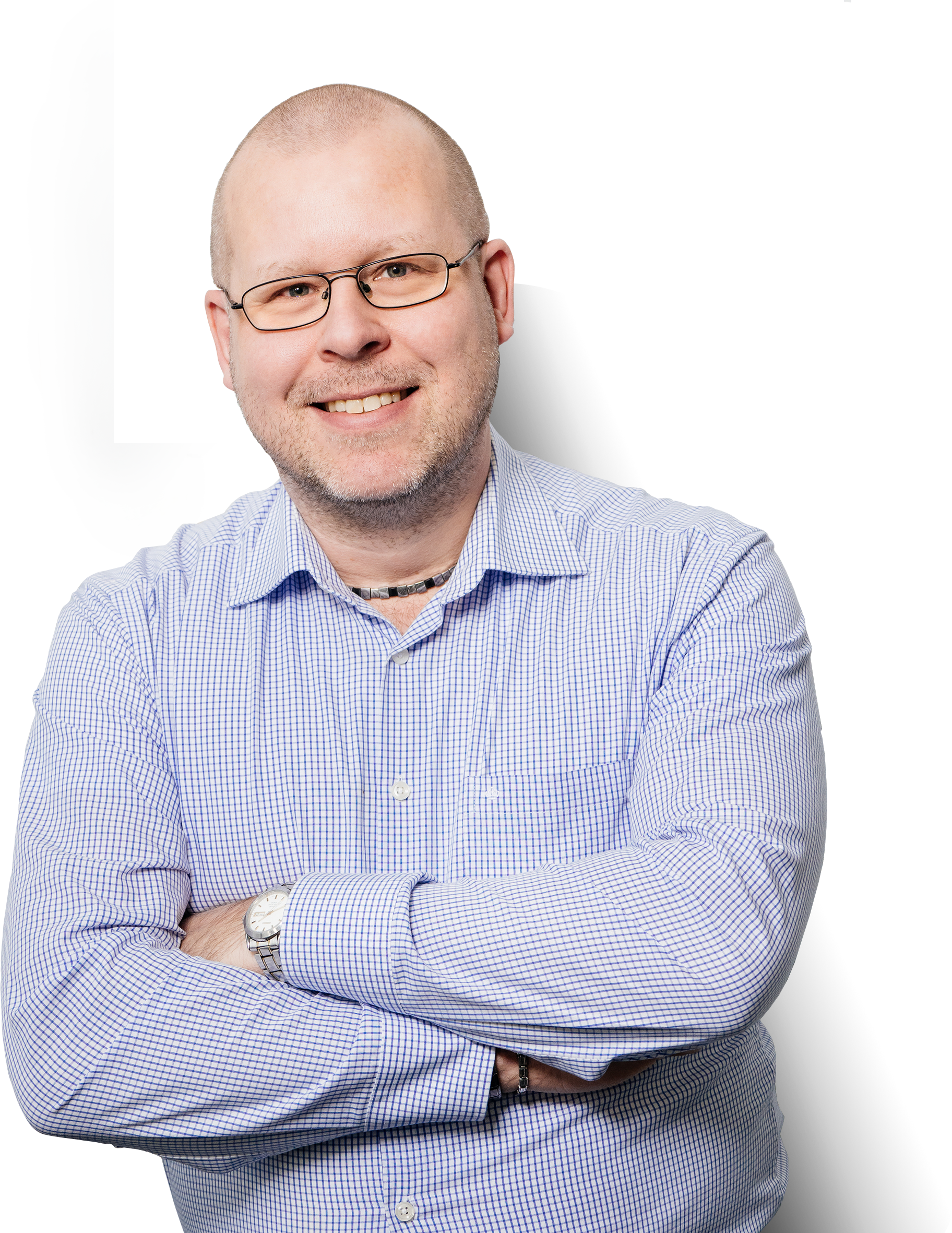Knowledge base
Anti-static
In an everyday context, we use ‘anti-static’ to refer to protection against that clinging effect you get, for example, with clothing when there’s a static charge build-up. In the Ex context, we more specifically talk about dissipation. See Dissipative.
ATEX
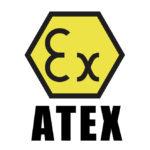
From the French ATmosphère EXplosible (Explosive Atmospheres), ATEX refers to a set of European Union (EU) directives regulating explosion protection. Learn more about ATEX.
Blue Retina
LEDs produce blue light which can damage the retina of the eye. Basically, humans do not recognize blue light as dangerous, so we don’t react to strong or excessive blue light exposure by turning away or blinking. Learn more about blue retina.
Bulkhead
Bulkhead used to refer to a particular type of especially durable fixed light. They were usually round or oval-shaped and featured a thick lens with a metal grate covering. You often find these types of lights in marine applications where heavy weather protection is required. While traditional bulkhead lights are still in use, today a bulkhead light can take many different forms. They are typically fixed luminaires and always feature heavy-duty durability making them ideal for harsh, industrial-grade applications.
Candela (cd)
The standard unit of measurement for luminous intensity, candelas are based on the luminous properties of a traditional candle. Technically, a lumen is measure of the energy and time (the ‘flux’) of the light output, whereas a candela is a measure of the energy, time and angle of the light.
Candelas are interesting for scientific research, but when it comes to assessing how the human eye experiences light, candelas are not meaningful. This is why you typically don’t see candelas mentioned with commercial luminaires.
Casambi
Modern LEDs open up a wide range of possibilities when it comes to computerized lighting control. As an alternative to wired solutions like DALI, the Casambi solution uses Bluetooth to provide fine-tuned illumination control via the Casambi app on smartphones, tablets and even smart watches.
CCC
Short for China Compulsory Certification. The CCC issues certifications of equipment intended for export to the Chinese market. This includes Explosion Hazardous Area equipment and related explosion protection certificates.
CE
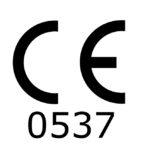
From the French Conformité Européenne (European Conformity). The ‘CE’ label is used by manufacturers to indicate that their product complies with all the applicable rules and requirements, called directives, defined by the European Commission (EC). Ex products, for example, must comply with a wide range of requirements under EC in addition to those set out by ATEX.
If you see a 4-digit number under the CE logo, that tells you the identity of the Notified Body that did the CE assessment of the manufacturer. To the right you can see, for example Atexor’s CE logo.
Certification
At Atexor we like to emphasize this: the certification is your friend. It provides (or should provide) proof that the Ex equipment you are buying is what it claims to be. Learn more about certifications.
Conductive
If something is conductive, electricity can easily travel through it – generally not a good thing in Explosion Hazardous areas. Learn more about conductivity.
Confined space
Confined spaces are spaces completely or partially enclosed with restricted means for entry and exit. In the Explosion Hazardous world, confined spaces are particularly full of risks. Learn more about confined spaces.
CRI
Short for Color Rendering Index. On a scale from 1 to 100, CRI measures how an artificial light source compares to natural white light, with 100 being essentially identical to natural light. Learn more about the color rendering index.
DALI
Short for Digital Addressable Lighting Interface. This is the fancy name for the standardized interface allowing software-based control of a luminaire’s brightness. It used to be that the only way you could dim a light was with a mechanical knob or switch. With the digital method, you can adjust brightness and other things, like the color of the light, with software.
Directive
Within the European Union, ‘directive’ is used to refer to the rules and requirements defined by the European Commission.
Dissipative
To dissipate means to scatter or disperse. In our context, dissipative is an electrical property of the materials we use in Ex luminaires. Learn more about dissipation.
DSEAR
Short for Dangerous Substances and Explosive Atmospheres Regulations. The DSEAR is the UK legislation governing Explosion Hazardous Areas similar to the European Union’s ATEX directive. DSEAR compliance falls under the UK Health and Safety Executive.
EAC
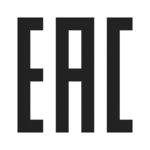
Short for Eurasian Conformity. The EAC mark, like the CE mark in the EU, indicates that the product meets the requirements of all applicable technical regulations of the Euroasian Economic Commission (EEC) covering Russia, Kazakhstan, Belarus, Kirghistan and Armenia. They handle, among other things, the customs clearance for imports to Customs Union countries. Before EAC marking came into use, the prevalent product marking was GOST R. Atexor Oy does not have valid EAC certifications.
EC type approval
For certain lighting applications, additional certifications are needed within the EU. EC type approval is required for electrical equipment used in motor vehicles, for instance. The EC type approval certifies that the equipment meets certain requirements and provisions dealing with radio interference (electromagnetic compatibility) as defined by Directive 72/245/EEC and its amendments. In our case, EC type approval applies to the MICA® ILC chargers which can be installed in fire engines.
 The certification includes an “e-Nr.“ distinction which indicates the country where the product was certified. For example, “e-1” is Germany, “e-2” France and “e-17” is Finland.
The certification includes an “e-Nr.“ distinction which indicates the country where the product was certified. For example, “e-1” is Germany, “e-2” France and “e-17” is Finland.
Ecodesign Directive
The European Union Ecodesign Directive is a framework for reducing the environmental impact of products that consume energy. For product manufacturers, it establishes important principles for long-term sustainability of new products. This directive will likely have a noticeable impact in spare parts availability for existing products, as production of older, less energy-efficient components is ramped down.
EM – Emergency Function
When you are on the job, a power failure can turn expected challenges into potential danger. We designed our EM function for temporary work lights and hand lamps to specifically to address the risks power failures create. A combination of battery power and intelligent signaling helps workers stay safe when their main power supply is lost. Learn more about our EM function in SLAM® and MICA® products.
EMC
Short for Electro Magnetic Compatibility. Most markets around the world have implemented rules and regulations related to electric and magnetic interference. The basic principle is: do not disturb or be disturbed.
For instance, the FM radio and GPS navigator in a car should be able to work at the same time without causing any trouble with signal reception. Ex-rated equipment sold within the European Union must comply with the EMC directive 2014/30/EU.
Equipment Protection Level
Equipment Protection Level (EPL) is defined by the international standard IEC/EN 60079. The assigned EPL of equipment indicates the risk level or ‘likelihood’ that the equipment can become a source of ignition. Learn more about Equipment Protection Level.
Ex
Also known as Explosion Proof, Explosion Protected, Ex Proof, Ex Rated – used worldwide as simple ways to say, “Explosion resistance.” Learn more about Ex.
Explosion Hazard
Many work sites have areas with potentially explosive atmospheres, also known as Ex Areas. These are common in a number of industries including petrochemical, paint, paper, wood processing, distilleries and grain silos, etc. And these are just a few examples of an almost endless list.
An explosive atmosphere is created in the presence of flammable gases, vapors or dust. When mixed with oxygen and an ignition source, such as electrical equipment, an explosion can occur. The equipment you bring into an Ex area must be ATEX/Ex certified (no ignition source).
Ex Zone
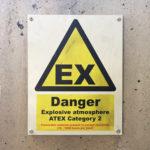
Explosion Hazardous Areas are divided into zones according to risk probabilities. Within the European Union, these are defined by IEC/EN standards (IEC/EN 60079-10-1 or 2) as directed by ATEX. Learn more about Ex Zones.
ExCB
Short for Ex Certified Bodies. These are organizations who are approved to serve as notified bodies for Ex equipment, facilities and people. The list of ExCBs is maintained by IECEx and available on their public website.
Floodlight
High powered luminaires used to illuminate particularly large areas. Ex Floodlight can be fixed or portable. Our SLAM® Star is certified floodlight for portable use.
GOST-R
State approval agency in Russia that defines national standards for the Russian market. See also EAC.
Hazardous Area
This can mean the area in question has any type of hazard. But in the Ex world, this is short-hand for a number of phrases, including:
- Explosion Hazardous
- Explosion Hazardous Area
- Potentially Explosion Hazardous Area
The important thing here is for people who work in such areas to understand what equipment is safe to use, and for manufacturers to know how to make products rated for these areas
HSE
Short for Health, Safety and Environment. Sometimes including also Quality (HSEQ), the HSE area is impacted by both local and international regulations and standards, such as ISO 14001. In many organizations, HSE guidelines cover lighting requirements and are relevant for fixed, temporary, as well as personal (e.g. backup flashlights), lighting choices.
IEC
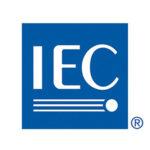
Short for International Electrotechnical Commission. This is the all-important, internationally recognized authority that maintains International Standards related to electronics. Learn more about IEC.
IECEx
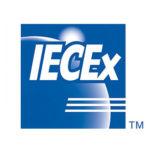
In a nutshell, this is the international body that oversees the requirements for Explosion Hazardous Areas as defined by IEC standards. Learn more about IECEx.
INMETRO
Short for Brazilian Institute of Metrology, Standardization and Industrial Quality. This is Brazil’s approval agency looking after Ex products. INMETRO follows IEC standards but have additional rules for the Brazilian market much like ATEX in the EU. For more information, visit the INMETRO website. Most of our SLAM® product family is INMETRO certified.
Intrinsic Safety
Governed by the international standard IECEx 60079-11, intrinsic safety is one method for making Ex products safe to use in hazardous areas. It means the product is safe by its very nature. For example, the energy used by the product is so low that it cannot possibly ignite anything. Learn more about intrinsic safety.
IP Rating
Short for Ingress Protection Rating. Defined by IEC 60529, we see the IP Rating topic come up frequently in consumer electronics like mobile devices and smartwatches. As the rating only deals with the penetration of dust or liquids into the product, it has its limitations in the Ex world where there is often the explosion risk from gas fumes. Naturally if you are working in Ex areas Zone 20 or 21, or you are otherwise working with liquids (like paints), IP Ratings matter.
With Ex products, we typically use IP56 and IP66 ratings. The first digit of the rating indicates dust protection level, and the second digit is the liquid protection level. So, an IP56 rating means the product has level 5 dust protection. It’s not completely impervious (not dust tight), but most dust and dirt cannot get inside. And with level 6 protection against liquids, the product can withstand a reasonable spray, but should not be completely submerged in water. IP66 bumps the dust protection up to maximum – no dust particles can get inside.
ITRI
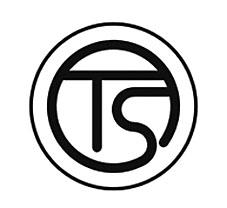 Short for Industrial Technology Research Institute. ITRI is the official agency in Taiwan that approves Ex equipment for use in Taiwan. Once certified, the product must carry the TS Mark label as shown to the right here. For more information, visit the ITRI website.
Short for Industrial Technology Research Institute. ITRI is the official agency in Taiwan that approves Ex equipment for use in Taiwan. Once certified, the product must carry the TS Mark label as shown to the right here. For more information, visit the ITRI website.
KOSHA
Short for Korea Occupational Safety and Health Agency. Like INMETRO in Brazil, this is the local authority responsible for Ex product imports and distribution. For more information, visit the KOSHA website.
LED
Short for Light-Emitting Diode. The go-to modern day light source, LEDs have come a long way from their humble beginnings as little red indicators. In addition to visible light, they can be used to generate infra-red and even ultra-violet light. Learn more about LEDs.
Light Fixture
Light fixtures (UK English ‘light fittings’) in the everyday context refers to the whole luminaire – the light-emitting element (lamp or LED), the housing, the stand or mount, and the electrical wiring. Learn more about light fixtures.
Linear
A linear luminaire or work light has one or more rows of LEDs aligned end-to-end on one side which provide 180 degree illumination for long spaces. First linear lights started to be seen in buildings around the 1950s in industrial spaces, with the use of fluorescent tubes. Link to Atexor’s range of fixed linear lighting called SLAM FIXED Novo.
Low Voltage
Low voltage is a term we commonly see in the Explosion Hazardous world, although it is not actually an explosion protection topic. This is, however, a hot topic for confined spaces which may or may not have Ex-rated areas, but almost always include an increased risk of electrocution. Learn more about low voltage.
Lumen (lm)
This is the standard unit of measurement for brightness or ‘luminous flux.’ With incandescent bulbs, we used watts (energy consumption) to indicate the brightness of a bulb. As more energy efficient technology became available, however, watts were no longer a clear indicator of how much light you actually get out of a luminaire.
So today we indicate the brightness of a luminaire in lumens. As an example, a traditional 40-Watt incandescent bulb produces between 400 and 500 lumens. A comparable LED bulb in terms of lumens may consume as little as 5 Watts.
Luminaire
A general term for any light-emitting product. We tend to use this term in the Ex business because it covers all types of lighting solutions. In modular systems, using this term also allows us to address properties of a luminaire separate from those of, for example, cables and mounting brackets which have their own special properties for Ex areas.
Lux (lx)
This is the standard unit of measure of luminescence, or how much light is hitting a given surface. Since we know that one lux is equal to one lumen per square meter, we can calculate how much light (lumens) is needed to illuminate a given space. Learn more about lux.
NATO Stock Number (NSN)
NATO Stock Number is a 13-digit numeric code used by the NATO alliance, identifying all the ‘standardized material items of supply’ as recognized by all NATO members. The code contains information about, for example, material group, material class, country of origin. NSN has been implemented in all contracting countries. Many countries that are not members of NATO also use the NSN program.
Several Atexor products have an NSN Stock Number. Please ask for more.
NEPSI
Short for National Supervision and Inspection Center for Explosion Protection and Safety of Instrumentation. NEPSI is one of the notified bodies specializing in testing and certifying Ex equipment for the China market. For more information, visit the NEPSI website.
Notified Body
A notified body is a government-approved organization in that is allowed to certify that products, processes, people and organizations comply with a given regulation or standard for EX areas within the EU (ATEX directives). Government authorities control and audit notified bodies in most countries, though the exact setup is not always so clear. However, there are mechanisms in place just about everywhere to help resolve conflicts of interest and ensure notified bodies remain objective and trustworthy.
For IECEx approvals, we talk about Ex Certified Bodies (see ExCB). The list of approved ExCBs is maintained by IECEx.
OP IS
These letters are used to indicate a product complies with the safety standards for optical radiation (also called ‘optical irradiation’). High-powered LED luminaires can create an ignition source if they are not designed to take into account the radiated energy of the LEDs. This can be a significant risk as LED technology continues to increase the power generated by each diode.
We recommend reading Tarmo Rintala’s article about optical radiation from the June 2018 issue of HarzardEx. He also has made a presentation about the principle risks of high-powered LEDs that is worth a look.
RoHS
Short for Restriction of Hazardous Substances. This European Union directive puts very strict rules on the use of dangerous substances in electronics, such as lead and mercury. All products, including spare parts and cables, sold in the EU must adhere to these rules.
The RoHS does not currently have a marking of its own. It is assumed that if a product uses the CE mark, it complies with the RoHS directive. ATEX directives do not add additional RoHS requirements.
SafeEye
LEDs have revolutionized the lighting industry. There is a drawback, though. The raw light from powerful LEDs is so bright that it can hurt your eyes. Particularly if you are working in dark conditions, looking straight at an LED light can be temporarily blinding and even painful. Our SafeEye solution ensures Atexor work lights and luminaires remain safe for worker’s eyes even when the lumens output is high. A specially designed diffuser spreads the light beam emanating from the LED to avoid glare without significantly reducing lumens.
For example, our SLAM® and SLAM FIXED® product families use SafeEye technology.
Safety Lamp
Back in the day, coal miners started calling lanterns with an enclosed flame “safety lamps.” Open flames in coal mines were a big problem, regularly causing deadly explosions. Attempts to help mitigate explosion risks stretch all the way back to the 1700s. Learn more about safety lamps.
Safety light
This is a common term used to refer to many different types of lights, from a yellow light on a traffic barrier to a red light on the back of a bicycle. Unfortunately, the term is sometimes also incorrectly used to denote Ex luminaires. In the Ex world, we prefer to emphasize the fact that safety is always more than just a single piece of equipment. People, products and places together make (or break) safety.
Temperature Class (T1, T2, T3, T4, T5 & T6)
Temperature class (also known as ‘T-rating’) defines the explosion hazard type for the Ex product. The class, from 1 to 6, indicates the highest temperature allowed without igniting anything in the area. Class defines risks of a zone in a given area. Learn more about Temperature Class.
‘U’ in Ex certification number
 If you see a ‘U’ at the end of an Ex certification number, it means the certification is for a component. The ‘U’ certificate is for the Ex component only. Ex equipment requires a single, independent Ex certification. A collection Ex component certificates does not fulfill this requirement.
If you see a ‘U’ at the end of an Ex certification number, it means the certification is for a component. The ‘U’ certificate is for the Ex component only. Ex equipment requires a single, independent Ex certification. A collection Ex component certificates does not fulfill this requirement.
UKCA / UKEX

Short for UK Conformity Assessed. The UKCA Ex Certification (UKEX) is part of the UKCA product marking framework. UKCA generally corresponds to the CE product marking of the EU and is intended for products sold in England, Scotland and Wales. Atexor implemented UKCA as part of our certification process, so our latest products include UKEX markings. For the latest information on the status of UKCA, please visit GOV.UK.
UL
Short for Underwriters Laboratories. UL are the leading authorities in the United States certifying product compliance with quality, safety and other standards. This includes all Ex-related certifications. Products that have passed the rigorous certification tests get a unique certificate number and permission to use the “UL” label on product.
UL listing
See also UL. The UL listing is a collection of products that UL, a widely respected certification body, has tested and certified. UL actively maintains this list, meaning it audits products it has already certified and may remove them if the product manufacturer fails the audit.
WEEE
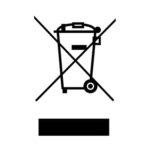
Short for Waste Electrical and Electronic Equipment. Within the European Union, the WEEE directive lays out rules for collecting and recycling waste from electronic devices, from industrial equipment to household appliances and toys. Compliant products must carry the WEEE recycle bin logo.
‘X’ in Ex certification number
 If you see an ‘X’ at the end of an Ex certification number, it means there are special conditions for use of the Ex equipment. This is perfectly acceptable for Ex equipment certification. However, the special condition(s) must be explained in the Ex equipment documentation.
If you see an ‘X’ at the end of an Ex certification number, it means there are special conditions for use of the Ex equipment. This is perfectly acceptable for Ex equipment certification. However, the special condition(s) must be explained in the Ex equipment documentation.
Disclaimer
The information in this knowledge base is provided ‘as is’ without guarantees for accuracy or completeness. Our intention here is to explain key terms and topics in simple, straight-forward language based on our current understanding of the relevant source materials and our own experiences. The contents herein are subject to change as we gain new information and insights.

